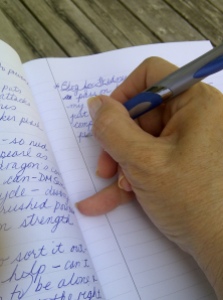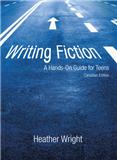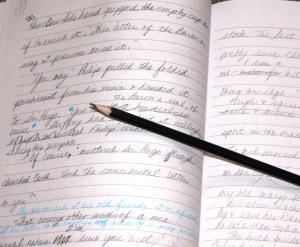 I’m happy to say that advanced reader copies of Writing Fiction: A Guide for Pre-Teens are on their way to me by snail mail. If you would interested in a PDF version for review purposes, please let me know. I would be happy to have you review the book for your blog, your teachers/homeschoolers newsletter, and especially for Amazon when the book is finally online.
I’m happy to say that advanced reader copies of Writing Fiction: A Guide for Pre-Teens are on their way to me by snail mail. If you would interested in a PDF version for review purposes, please let me know. I would be happy to have you review the book for your blog, your teachers/homeschoolers newsletter, and especially for Amazon when the book is finally online.
If you’ve been considering starting to journal as a way to enhance your writing or just to see where it leads you, I’ve included some great links below to get you started. I’ve used my journal a lot lately to brainstorm ideas for a short story, as well as, a Kindle book series. I’m developing the series while taking a course from Kristen Eckstein (http://ultimatebookcoach.com/) The information that I’ve been getting throughout the month-long series (Kindle in 30 Challenge) has been invaluable. Though I got the course at a discounted price during a promotion, the full price doesn’t come close to covering the amazing value of the content. Plus, she adds other free content and discounts to writers in the group. Drop by her site to see what I mean. There’s lots of free content available there, too.
1. Journal Through the Summer Part I by Kristi Holl
http://kristiholl.net/writers-blog/2013/06/journal-through-the-summer/
“Journaling is meant to be fun. Don’t put expectations on yourself during journaling time. Forget about your performance, and don’t critique yourself. Relax. Let go. Writers need a place to write where ‘enjoyment’ is the only requirement.”
2. Journal Through the Summer Part 2
http://kristiholl.net/writers-blog/2013/06/journal-through-the-summer-part-2/
3. Journal Prompts: You, Your Life, Your Dreams
“On this page, you’ll find journal prompts for writing about yourself and your unique perspective. At the bottom of this page are links to more journal writing prompts on different subjects.”
http://www.creative-writing-now.com/journal-prompts.html
4. Mining Your Mind: Journal Techniques for Writers
http://www.writersstore.com/mining-your-mind-journal-techniques-for-writers/
By Ruth Folit
“Writers practice the advice of Sir Francis Bacon, even if they are not aware of his precise words: ‘A (wo)man would do well to carry a pencil in his pocket and write down the thoughts of the moment. Those that come unsought are commonly the most valuable and should be secured because they seldom return.’
“Most writers carry a notebook, scraps of paper, old envelopes, to jot down ‘thoughts of the moment.’ A journal is another medium in which a writer can keep a record, albeit a slightly more unified one.”
If you would like to know when Writing Fiction: A Guide for Pre-Teens comes out, please fill out the following form. I promise that you will not be bombarded with spam emails, just the odd thing that I come across that you might find useful, such as a sample chapter or a link to a great writing resource. Thanks!








